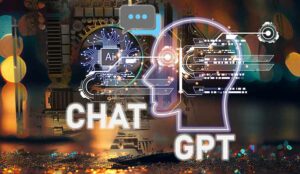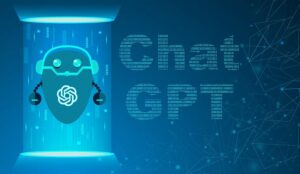Steve Nattress at Enghouse explores what CX leaders need to know about ChatGPT in customer service.
Generative AI is currently transforming the way multiple industries operate, but what will be the impact of ChatGPT in customer service?
Since its launch in November 2022, OpenAI’s ChatGPT conversational AI chatbot has been used by millions of people. As well as the free version, companies can subscribe to a paid service which provides enhanced features and capabilities.
The success of ChatGPT has both highlighted and accelerated the development of other large language models (LLM) from a range of companies. However, the growth of generative AI has also sparked fears and concerns.
The Risks of ChatGPT
Before looking at the potential uses of ChatGPT in customer service it is vital to understand the risks. Most of these stem from how the underlying Generative Pre-trained Transformer (GPT) model has been trained.
Essentially this was achieved by accessing vast amounts of public information from the internet in 2021. This means two things:
- The free version of ChatGPT doesn’t incorporate data from after September 2021. It can’t tell you who won the 2022 World Cup, for example.
- While it was trained on a range of sources, including the internet, there are no guarantees that information is factually correct.
Because of this, ChatGPT can provide plausible, but fundamentally incorrect answers. For example, if you used it as a customer service chatbot it could tell a customer that they were able to return a product and gain a refund – even if that was against company policy.
These “hallucinations” mean that using ChatGPT publicly without human guardrails to filter its answers is currently an enormous risk.
It is also important to understand how ChatGPT handles data. The free version retains any user-entered data to assist with training.
This means any confidential company information entered can be publicly accessible. Additionally, the paid version stores data for 30 days, leading to potential conflicts with corporate data storage, protection, and sovereignty policies.
Finally, the charges for the paid version of ChatGPT increase based on the usage frequency and the length of questions asked or answers provided. As a result, costs can ramp up very quickly, meaning usage needs to be focused where it will deliver tangible ROI.
The Uses of ChatGPT in Customer Service
All of this means that currently the most beneficial uses of ChatGPT reside in back-office processes where it assists and augments agents.
At Enghouse we’ve been using and testing earlier GPT models since 2019. Based on our experience, we see four immediate areas where it can increase efficiency, enhance the agent experience, and improve customer service.
1. Providing Personalised Answers From Your Knowledge Base
Adding your entire knowledge base to ChatGPT is prohibitively expensive due to OpenAI’s charging model.
However, you can take answers from your existing AI-powered knowledge base and use ChatGPT to generate personalised responses that agents can share with customers, based on the exact context.
2. Supporting Agents With Relevant Information
We’ve created a demonstration where ChatGPT analyses a customer/agent conversation and automatically suggests a selection of relevant answers, based on understanding what is being said.
The agent therefore can select the best response, minimising their effort while safeguarding against misinformation.
3. Building Your Knowledge Base Faster
Creating a knowledge base and keeping it updated can require significant human effort. ChatGPT can automate this process by taking bullet point answers and generating full knowledge base entries.
These can then be checked by the knowledge base manager. This removes the need to manually write content, making the knowledge base more efficient to run and faster to update.
4. Conversation Summarisation and Highlighting Next Actions
During an interaction, a significant amount of information is generated and recorded. This could be questions that the customer has asked a chatbot, emails and other digital communications, conversations with an agent or wrap-up reports.
This is all extremely important data but can be difficult to boil down to succinct actions and specific themes. Using ChatGPT to summarise conversations has multiple uses, including:
- Outlining next actions. These can then be routed to different agents or departments (such as finance or logistics) for their response
- Providing a record that can be quickly accessed by agents if the customer makes contact again. This saves agent time as they don’t have to put customers on hold while they wade through pages of information. This helps increase efficiency and improve the customer experience.
- Enabling data to be easily mined for specific themes. While existing AI-based Voice of the Customer solutions can look for defined topics within interaction records, ChatGPT can pick out new, unknown themes and use these to highlight opportunities. Thanks to its speed and scalability it could even allow companies to respond to breaking issues, such as competitors running a sale, enabling a same-day response.
- Automating agent evaluation by analysing all interactions, and using this information to highlight best practices and training opportunities
Watch This Space
Until now, the adoption of such applications has been primarily limited to large contact centres with substantial budgets, enabling them to invest in their own AI solutions.
What large language models and similar tools do is to open the same opportunities to smaller and medium-sized contact centres. This enables them to increase efficiency, better support agents, and uncover new opportunities.
This blog post has been re-published by kind permission of Enghouse Interactive – View the Original Article
For more information about Enghouse Interactive - visit the Enghouse Interactive Website
Call Centre Helper is not responsible for the content of these guest blog posts. The opinions expressed in this article are those of the author, and do not necessarily reflect those of Call Centre Helper.
Author: Enghouse Interactive
Published On: 18th Jul 2023 - Last modified: 9th Dec 2024
Read more about - Guest Blogs, Enghouse Interactive






 Enghouse Interactive delivers technology and expertise to help bring your customers closer to your business through its wide range of customer contact solutions.
Enghouse Interactive delivers technology and expertise to help bring your customers closer to your business through its wide range of customer contact solutions. 



























